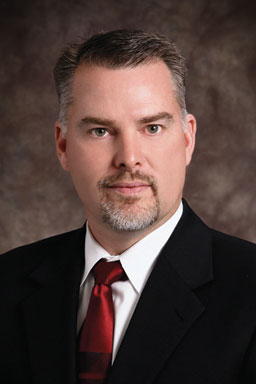I was deeply humbled and extraordinarily honored to be nominated recently for the office of AASV vice-president. Thank you very much to the executive board for their trust and confidence. I was out of cell phone range when I received two calls. The first message asked me to call back right away to give the executive board permission to nominate me. The second one said “You’re too late – we already did.” Wow, how do you respond to that? I spent several hours driving home from the airport thinking about it. By the time I arrived at home I knew that if my family and partners were game, then so was I. I have been actively involved in the AASV for a number of years and have had the opportunity to serve in several different roles. And yet, every year, I leave our annual conference in awe of our members and feeling like I should be contributing more. The AASV has given so much to me I could not decline an opportunity to give something back when called upon to serve.
My roots in agriculture, and especially animal agriculture, were formed at a young age. I grew up around hogs, cattle, and crops in central Iowa and I knew at a young age that I was going to be a farmer or a veterinarian. Graduating from high school at the peak of the 80s farm crisis made veterinary medicine look the wiser choice. That was a decision that I will never regret. I completed my undergraduate work at Iowa State University in the Department of Animal Science and later graduated from ISU’s College of Veterinary Medicine.
My practice life started in Minnesota, and for the last 11 years, I have had the good fortune of practicing veterinary medicine with my (now) six partners at Suidae Health and Production in Algona, Iowa. We are a swine-only practice focused on providing full-service swine veterinary care as well as swine health and business consulting. We also have business initiatives in research and management.
My wife, Dini, and I live on a farm near Algona, Iowa, with our four kids – Amanda, Hunter, Lauren, and Beth. Every time I see them working with their animals and animal projects, I am reminded that we have a great job as agriculturalists and especially as veterinarians. We also have a number of obligations.
As AASV members, we belong to a great organization with a rich legacy. Those who have come before us have left us in a great position. However, time has provided us with a number of challenges….
Foot-and-mouth disease, classical swine fever, pseudorabies, PRRS, SIV, and PCVAD are all reminders of our successes as veterinarians, but also of the persistent challenge of evolving disease-causing agents. These pathogens cause needless animal suffering and catastrophic economic consequences, and threaten the conservation of livestock resources that we were sworn to protect. The AASV has done a wonderful job in advocating for research and surveillance. With today’s importance on export markets, keeping borders open from a health perspective is even more important. Animal health and disease management and eradication must continue to be a cornerstone of what the AASV does. The AASV has successfully linked practicing veterinary medicine with industry and academia. Through the AASV committee structure and our network of communication, we have a solid foundation and the impetus to progress.
Agriculture has become more specialized over the last 20 years. This isn’t necessarily a bad thing, but it certainly has had some side effects. The support base under animal agriculture has shrunk in breadth and depth, leaving the door wide open for those who seek to destroy animal agriculture. For the better part of 2 decades, we have watched animals become humanized and their caretakers become demonized. The AASV must continue to be the voice of reason, experience, and expertise when it comes to animal health and welfare. We must always advocate what is right for the animals and their owners. We must continue to have our clients prepared to be top-notch food suppliers through programs like PQA Plus, We Care, and Judicious Antibiotic Use. The AASV has done a good job of providing education, research, and material toward these endeavors. Continuing education and research focus are both our obligation and our opportunity. Within organized veterinary medicine, we must continue to provide the science that will bridge the chasms of ignorance which will otherwise widen as people get farther and farther from knowing how their food is produced.
During my senior year of veterinary school, I was asked to speak at the Sustaining Members Foundation Banquet. I didn’t know what to expect from this group of seasoned veterinarians. To this day, that talk continues to be one of the most profound speaking experiences that I have had – not for the impact that I had on the audience, but for the impact that they had on me. I chose to speak on the community of veterinary medicine, and it must have struck a common chord. Being a veterinarian is a tremendous privilege, but it is also a responsibility. We have an obligation to protect animal health, relieve animal suffering, conserve livestock resources, and promote public health. Those who have come before us have done an admirable job. Our obligation to the community of veterinary medicine and the larger community that we all serve is to continue to recruit, train, and develop the best minds in the business to facilitate future knowledge, research, and continual learning. The AASV has a rich tradition in this regard and must remain a leader in this endeavor. This is the legacy that we must continue to nurture.
I appreciate your investment of time in getting to know me a little bit better through this article. We have a great organization, and it would be my privilege to serve as its next vice president. I would sincerely appreciate your support. Thank you.

